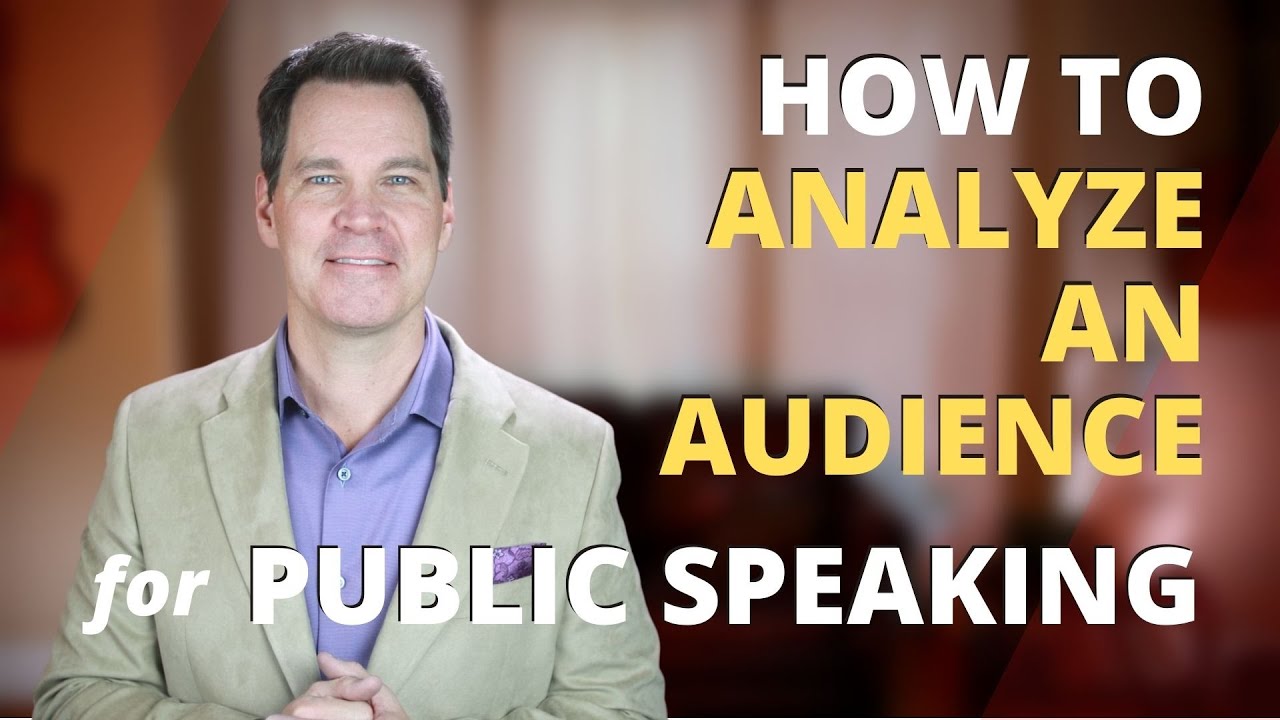Audience—Centered Speaking
Summary
TLDRIn this video, the speaker discusses how to create and deliver an audience-centered presentation. Key points include understanding the importance of focusing on the audience rather than the presenter, defining a clear purpose (inform, persuade, entertain), and connecting with the audience through knowledge and empathy. The speaker emphasizes the need to identify the specific purpose of the presentation and tailor the content to the audience's needs and interests. The ultimate goal is to ensure the audience gains value, whether through learning, motivation, or entertainment, fostering confidence and connection with the listeners.
Takeaways
- 😀 Focus on being audience-centered in your presentations, shifting the focus from 'you' to 'them.'
- 😀 Identifying a clear purpose for your presentation is essential for audience engagement and clarity.
- 😀 Knowing your audience helps you connect with them, enhancing your confidence and the impact of your message.
- 😀 Value is key to audience engagement – ask yourself, 'What value will I add to my audience?'
- 😀 Fear of not connecting with the audience often stems from not knowing how to do so; knowledge bridges this gap.
- 😀 Audience knowledge includes understanding demographics, interests, educational background, and emotional needs.
- 😀 Connection with your audience requires more than knowledge – it demands application of that knowledge in every stage of your presentation.
- 😀 Empathy, the ability to put yourself in your audience’s shoes, is a crucial skill for connecting with them effectively.
- 😀 Presentations generally serve one of three purposes: to inform, to persuade, or to entertain.
- 😀 A specific purpose is necessary for a focused presentation – identify what your audience will gain by the end.
- 😀 Knowing your audience and applying that knowledge in how you gather material, structure your ideas, and introduce content is vital for success.
Q & A
What is the main focus of today's presentation?
-The main focus of the presentation is to teach how to give an audience-centered presentation, emphasizing the importance of focusing on the audience rather than just on oneself as a speaker.
What does it mean to create an audience-centered presentation?
-An audience-centered presentation means considering the audience’s needs, interests, and background throughout the entire process of creating and delivering the presentation, ensuring it is relevant and engaging for them.
How do you identify the value that your presentation will add to the audience?
-To identify the value, you need to ask yourself what the audience will gain from your presentation, whether that be knowledge, inspiration, or motivation. It’s important to ensure that the content provides something meaningful to them.
What is the relationship between fear and connecting with your audience?
-Fear often arises from a lack of confidence in connecting with the audience. When you know how to connect and relate to your audience, it boosts your confidence, reducing fear and making the presentation more successful.
What is the key to connecting with your audience?
-The key to connecting with your audience is knowledge—knowing your audience well, including their needs, interests, and background, and applying that knowledge throughout the creation and delivery of your presentation.
How does empathy play a role in knowing your audience?
-Empathy allows you to put yourself in the audience's shoes, understanding how they feel and thinking about what will resonate with them, making your presentation more relatable and engaging.
What are the three main purposes for giving a presentation?
-The three main purposes for giving a presentation are to inform, persuade, or entertain the audience.
What is the difference between a general purpose and a specific purpose in a presentation?
-A general purpose refers to the overall goal of the presentation, such as to inform, persuade, or entertain. A specific purpose is more detailed, outlining what the audience will learn or gain from the presentation by the end.
How do you develop a specific purpose for a presentation?
-To develop a specific purpose, you need to ask what the audience will gain from the presentation. For example, a specific purpose could be for the audience to learn how to apply techniques that will improve their own presentations.
Why is connection important in public speaking?
-Connection is crucial in public speaking because it helps the audience engage with the content, making them more likely to understand, retain, and be motivated by the information shared.
Outlines

Dieser Bereich ist nur für Premium-Benutzer verfügbar. Bitte führen Sie ein Upgrade durch, um auf diesen Abschnitt zuzugreifen.
Upgrade durchführenMindmap

Dieser Bereich ist nur für Premium-Benutzer verfügbar. Bitte führen Sie ein Upgrade durch, um auf diesen Abschnitt zuzugreifen.
Upgrade durchführenKeywords

Dieser Bereich ist nur für Premium-Benutzer verfügbar. Bitte führen Sie ein Upgrade durch, um auf diesen Abschnitt zuzugreifen.
Upgrade durchführenHighlights

Dieser Bereich ist nur für Premium-Benutzer verfügbar. Bitte führen Sie ein Upgrade durch, um auf diesen Abschnitt zuzugreifen.
Upgrade durchführenTranscripts

Dieser Bereich ist nur für Premium-Benutzer verfügbar. Bitte führen Sie ein Upgrade durch, um auf diesen Abschnitt zuzugreifen.
Upgrade durchführenWeitere ähnliche Videos ansehen

How to Analyze an Audience for Public Speaking

Seni Menyiapkan Presentasi

Soft Skills | Presentation Skills | How to Improve your Presentation? | Tutorialspoint

Como montar uma palestra UAU - Como dar uma palestra UAU - Parte 1

Disruptive Pedagogy in Higher Education Landscape

ARALING PANLIPUNAN 8 (Quarter 2-Week 2) MATATAG Curriculum
5.0 / 5 (0 votes)
